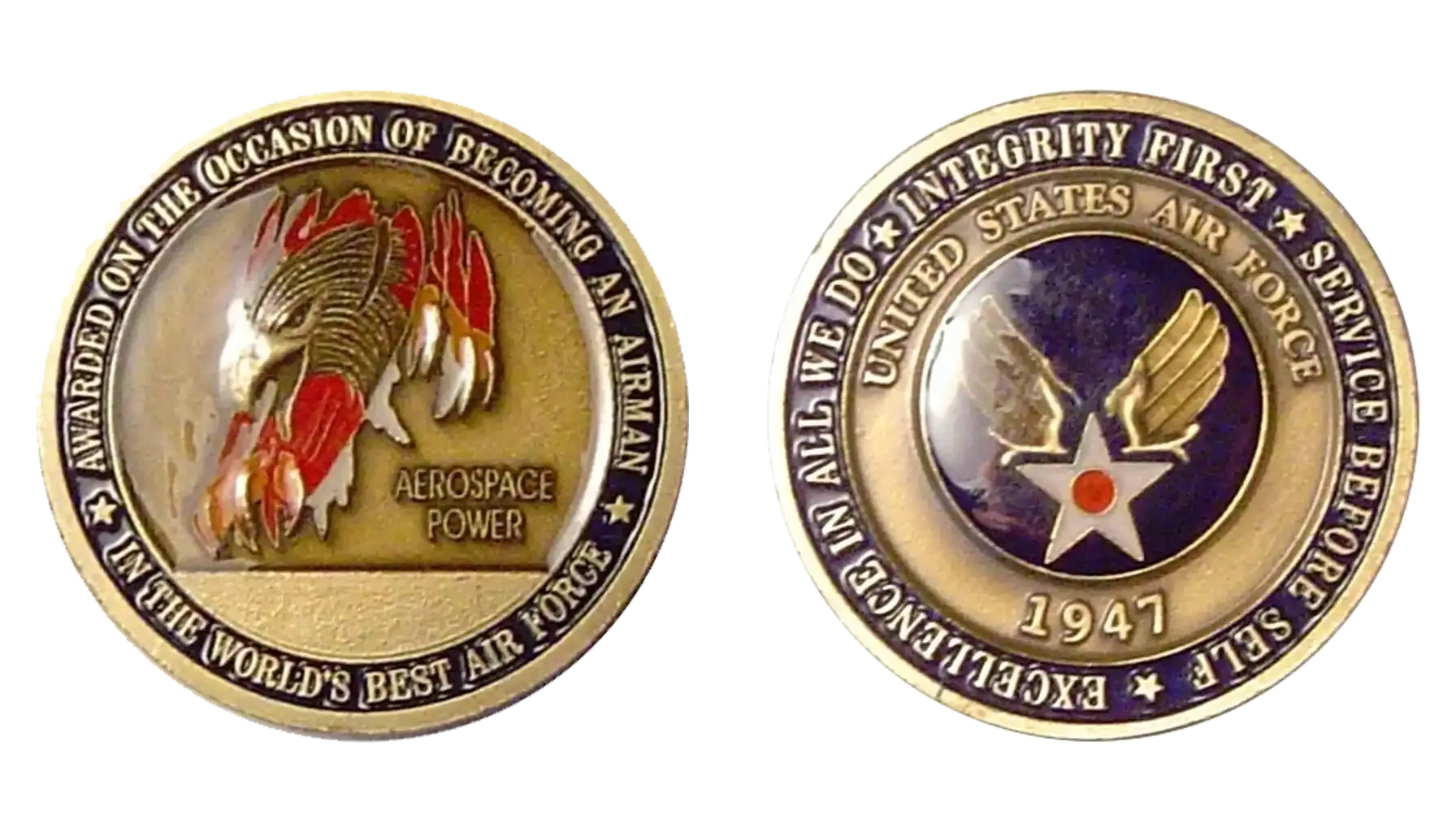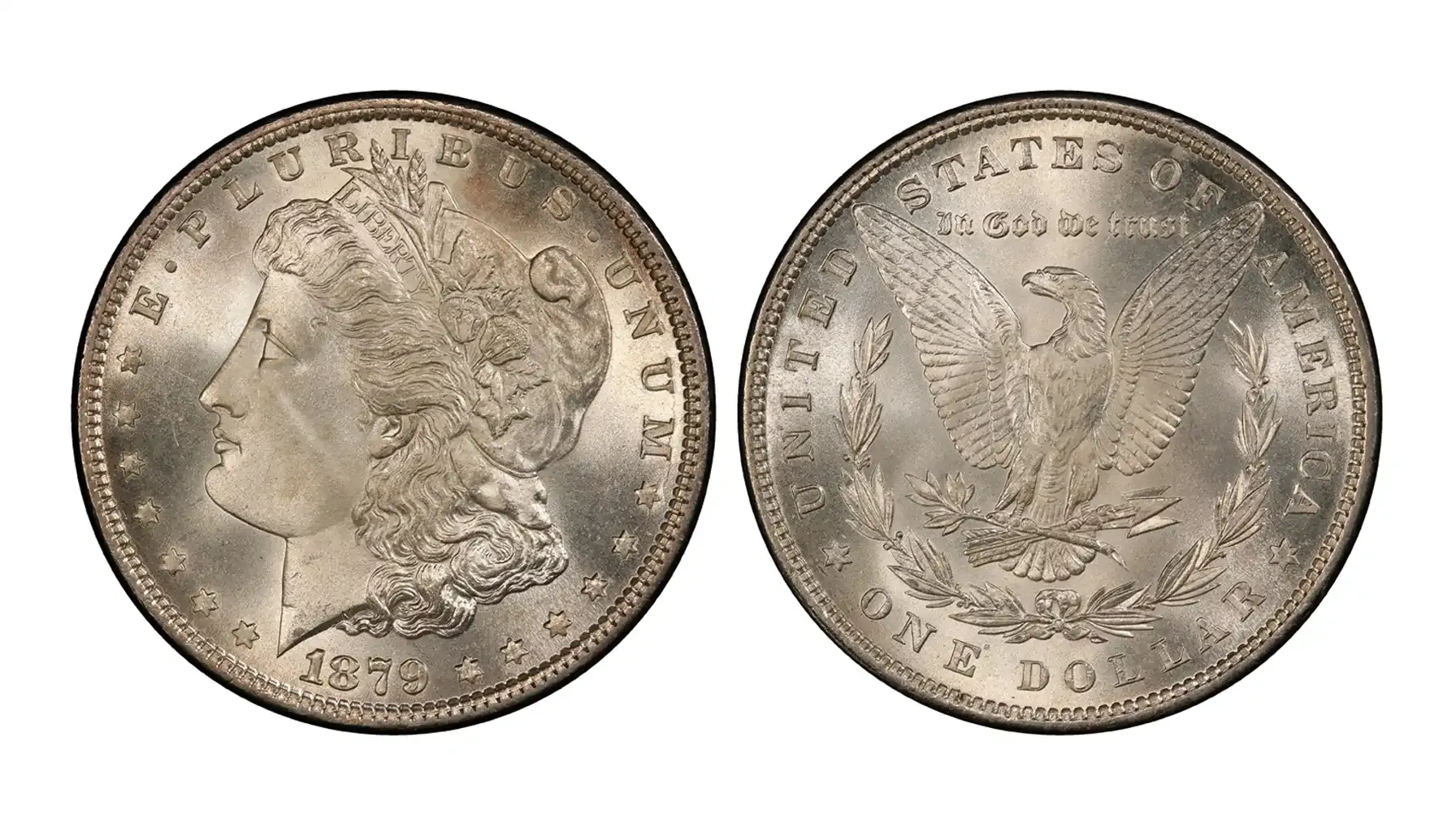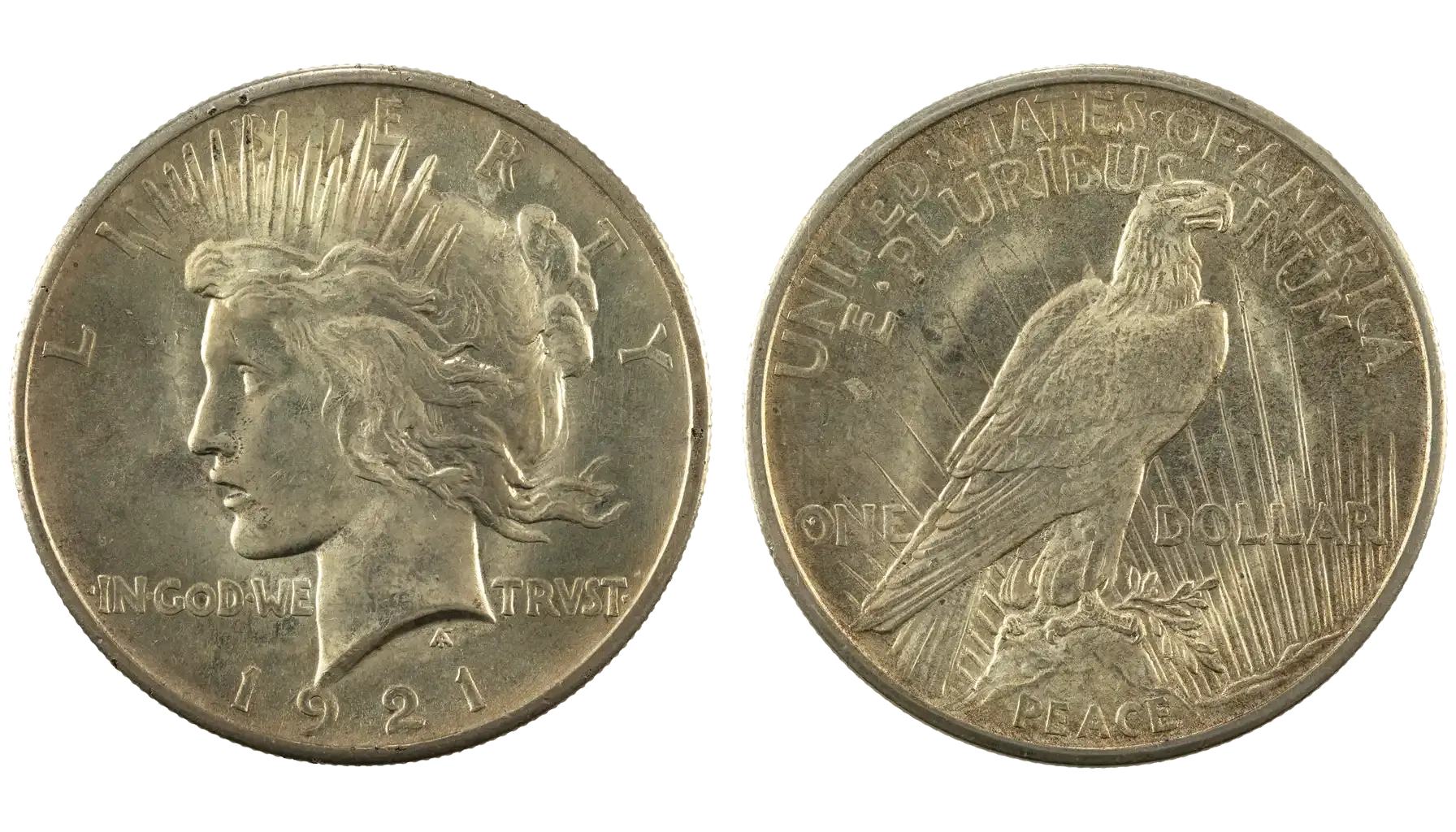Contents:
How Much Is a Hobo Nickel Worth?
Hobo Nickels are miniature sculptures, each created by hand by changing the design on a regular coin. Let's learn about their rich history, and find out how much they can be worth. This art form represents a unique intersection of numismatics and folk art, making it a captivating hobby fоr many.
If you are not sure about your coin rarity - use the coin identifier app for free and you will know everything on it.
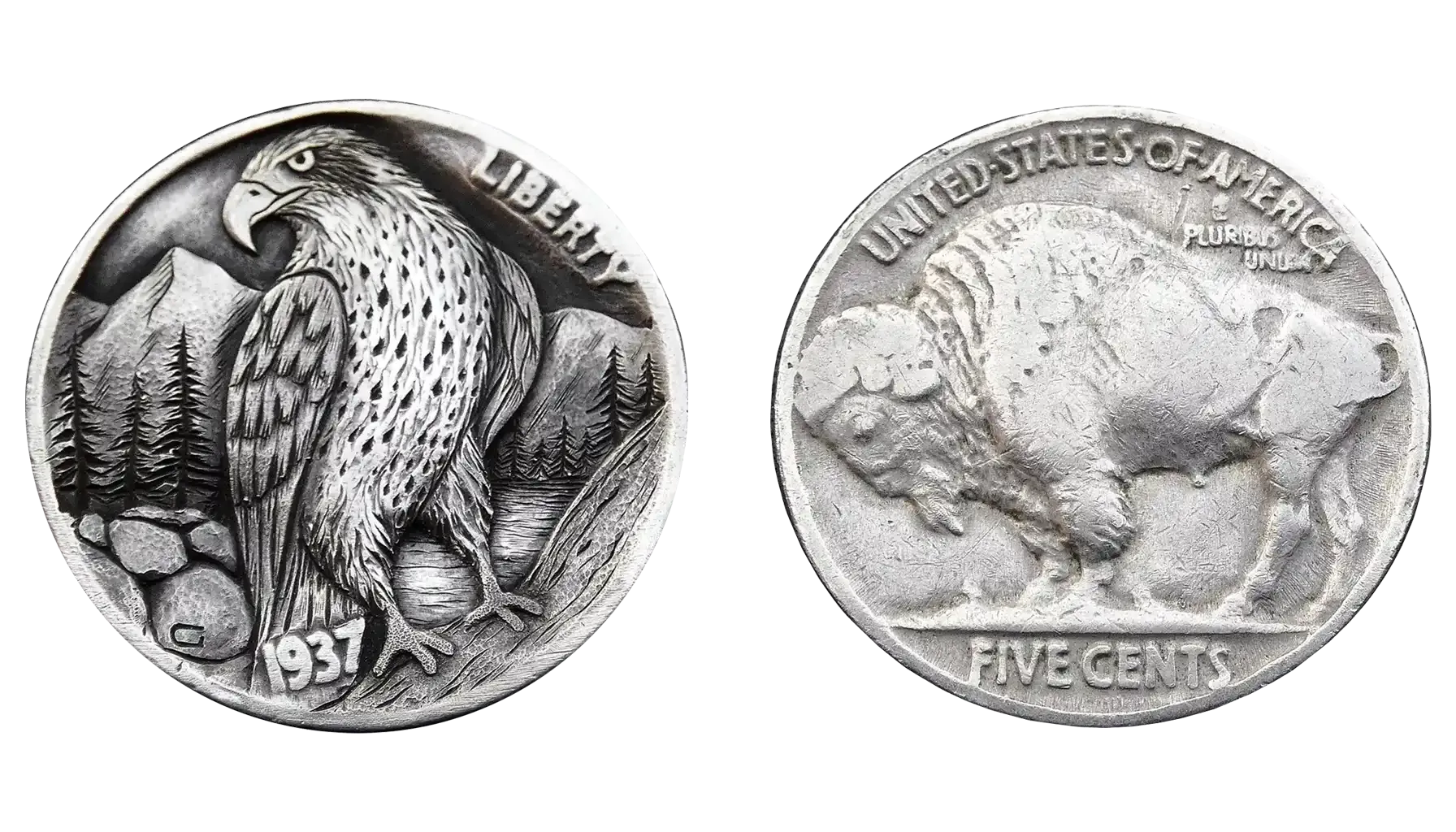
What Are Hobo Nickels?
Many people ask, what is a Hobo Nickel and why is it so special? It is a coin, most often a United States Buffalo nickel, that has been artistically modified. An artist carves a new picture onto the coin's surface, usually transforming the profile of the Native American into something completely different.
The artists, using simple tools, created personal and expressive art on a very small surface, making each coin a one-of-a-kind piece that tells a story.
The Story Behind the Coins
The Hobo Nickel history begins in the early 1900s, alongside the Buffalo nickel's minting in 1913. During the Great Depression, many unemployed travelers, or hobos, carved nickels to pass the time during long train rides.
Its soft nickel-copper composition was easy to carve, and the large, high-relief portrait of a Native American provided a substantial "canvas" for new designs.
Classic VS Modern Carvings
It is important to know the difference between old and new Hobo Nickels. An original Hobo Nickel was made during the classic period (1913-1940s) with basic tools like pocket knives and nails, giving them a simple, powerful, and often rustic style.
Today, modern artists, often members of organizations like the Original Hobo Nickel Society, use advanced tools like pneumatic engravers and microscopes to create incredibly detailed carvings. Both types are valuable and highly collectible, but classic nickels are rarer and carry a direct connection to the historical era of their creation.
How to Tell if a Hobo Nickel is Real
To identify a real Hobo Nickel from the classic era, there are a few things to look for. Most ones were carved on coins made before 1938, when Buffalo Nickel was discontinued.
Tool Marks: Classic designs show marks from simple hand tools, like uneven scratches or the distinct gouges from a knife blade.
Wear and Patina: An old coin's surface will look smooth and worn from being carried in a pocket for years. This natural, even wear is difficult to replicate artificially.
Overall Style: Classic carvings are often bolder and less refined. Details like hair and beards are typically suggested with deep lines rather than fine, individual strands.
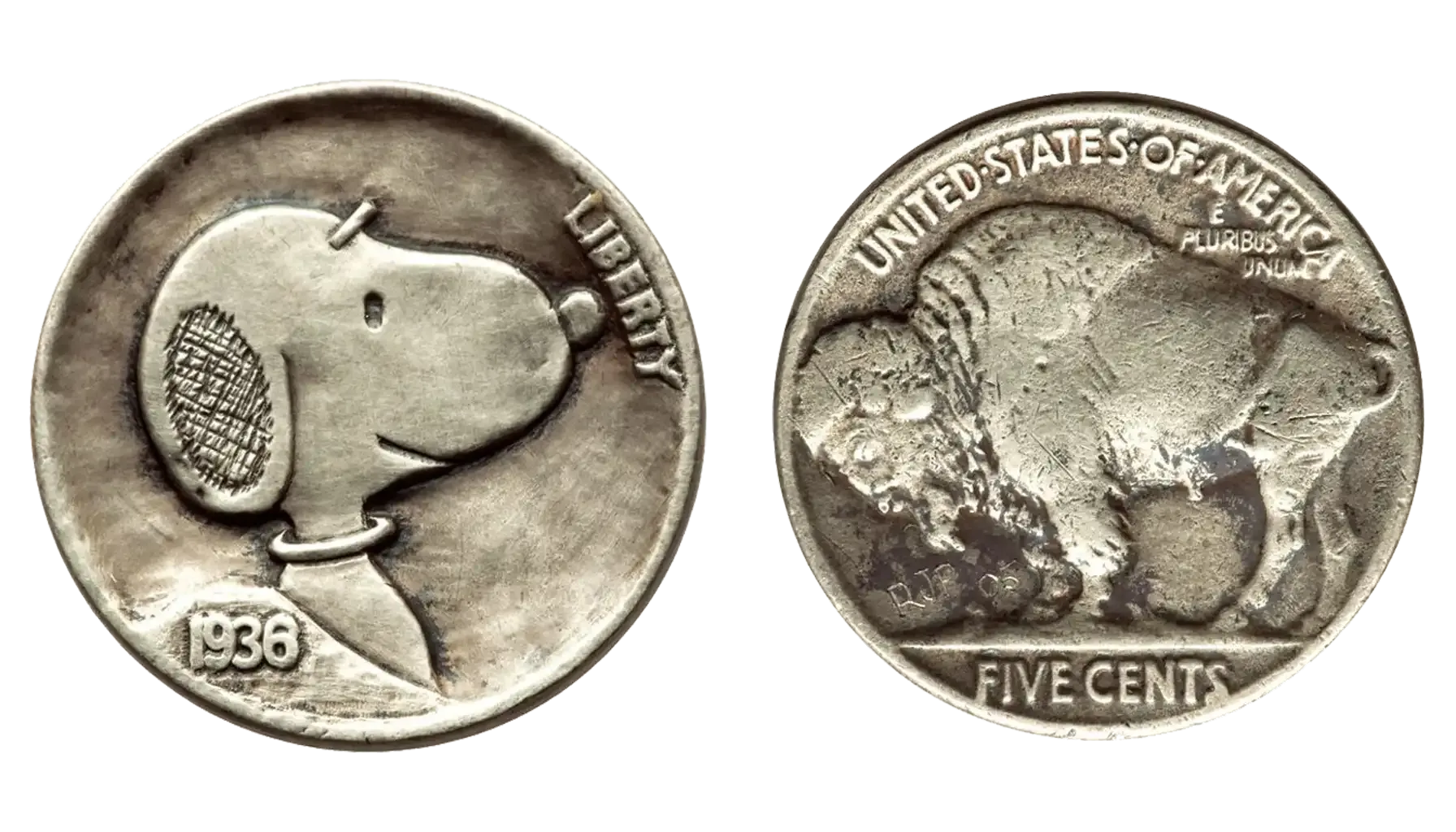
Feature | Classic Hobo Nickel (pre-1940s) | Modern Hobo Nickel (post-1980s) |
Tools Used | Simple tools: knives, nails, files | Advanced tools: power engravers, microscopes |
Detail Level | Simple, bold, sometimes rough | Very detailed, fine lines, polished |
Coin Wear | Smooth, worn surfaces from handling | Sharp details, little to no wear |
Subject Matter | Common themes: men with beards, hats | Wide variety of subjects, including fantasy |
What Determines a Hobo Buffalo Nickel Value?
Usually, to understand the value of a coin, there are a number of factors that are worth paying attention to. The Hobo Nickel value can range from under $100 to many thousands of dollars. The price depends on the artist's reputation. Carvings by famous classic artists like Bertram "Bo" Wiegand and George Washington "Peanut" Hughes are highly sought after. Key factors include:
Artist: Works by famous, identifiable carvers command the highest prices.
Artistic Quality: Look for creativity, depth, a pleasing composition, and a smooth finish. A well-centered and imaginative design is always preferred.
Subject Matter: Unusual designs, such as portraits of women, skulls, or two-sided carvings, are rarer and more valuable than the standard man with a derby hat.
Condition: A well-preserved carving, free from significant post-carving damage, is essential for maintaining value.
Note: Via Coin ID Scanner you can find the token’s characteristics in less than a minute.
The Most Valuable Hobo Coins
The most expensive Hobo Nickel examples are typically made by top artists from the classic era. A high-quality carving by "Bo" can sell for over $10,000. But some sellers can purchase it with CAC stickers which influence the price. His distinctive style, featuring deep dish-like fields and neatly rounded hats and collars, makes his work instantly recognizable to experienced collectors.
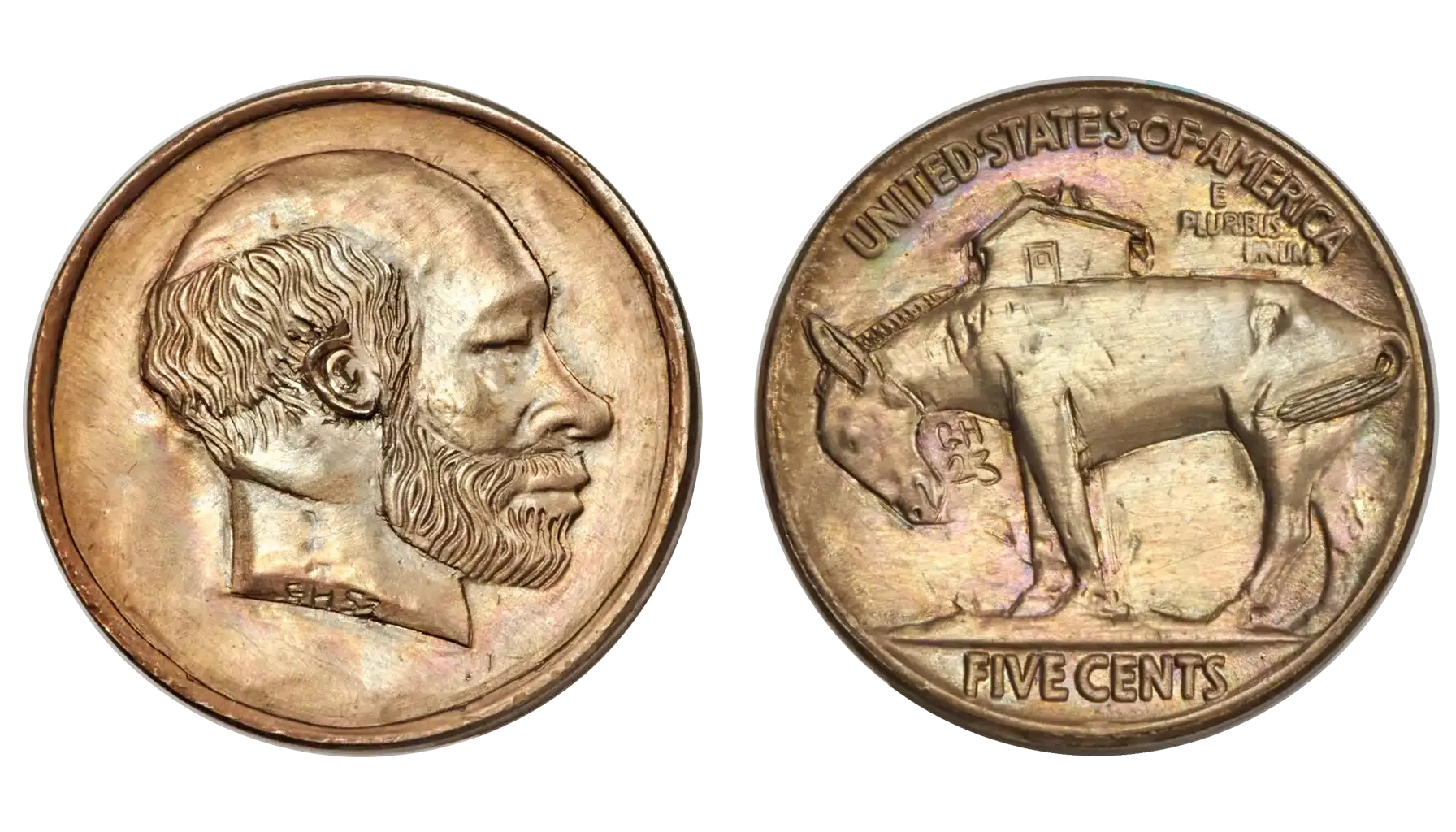
Artist Name | Estimated Market Value |
Bertram "Bo" Wiegand | $1,000 - $10,000+ |
George Washington "Peanut" Hughes | $500 - $5,000+ |
Unidentified Classic Carver | $50 - $500 |
Modern Master Carvers | $100 - $2,000+ |
Its specifications are:
Metal: 75% copper, 25% nickel
Diameter: 21.21 mm
Weight: 5.0 grams
While other coins like Indian Head 5 cents, even without data, were occasionally used, the composition and design made it the overwhelmingly preferred canvas for this art form.
These top-tier coins are very rare, and serious collectors pay a lot for these premier pieces of American folk art history.
The Process of Carving
Many wonder how to make a Hobo Nickel. The process starts with selecting a good coin, preferably one with minimal wear. The artist then often smooths the "field" of the coin before using small, sharp tools to slowly remove metal and reshape the portrait.
While other Hobo Nickel coins, like Indian Head cents, were sometimes used, they are much rarer. Each hand carved Hobo Nickel is a unique work of art, a testament to the patience and skill of its creator.
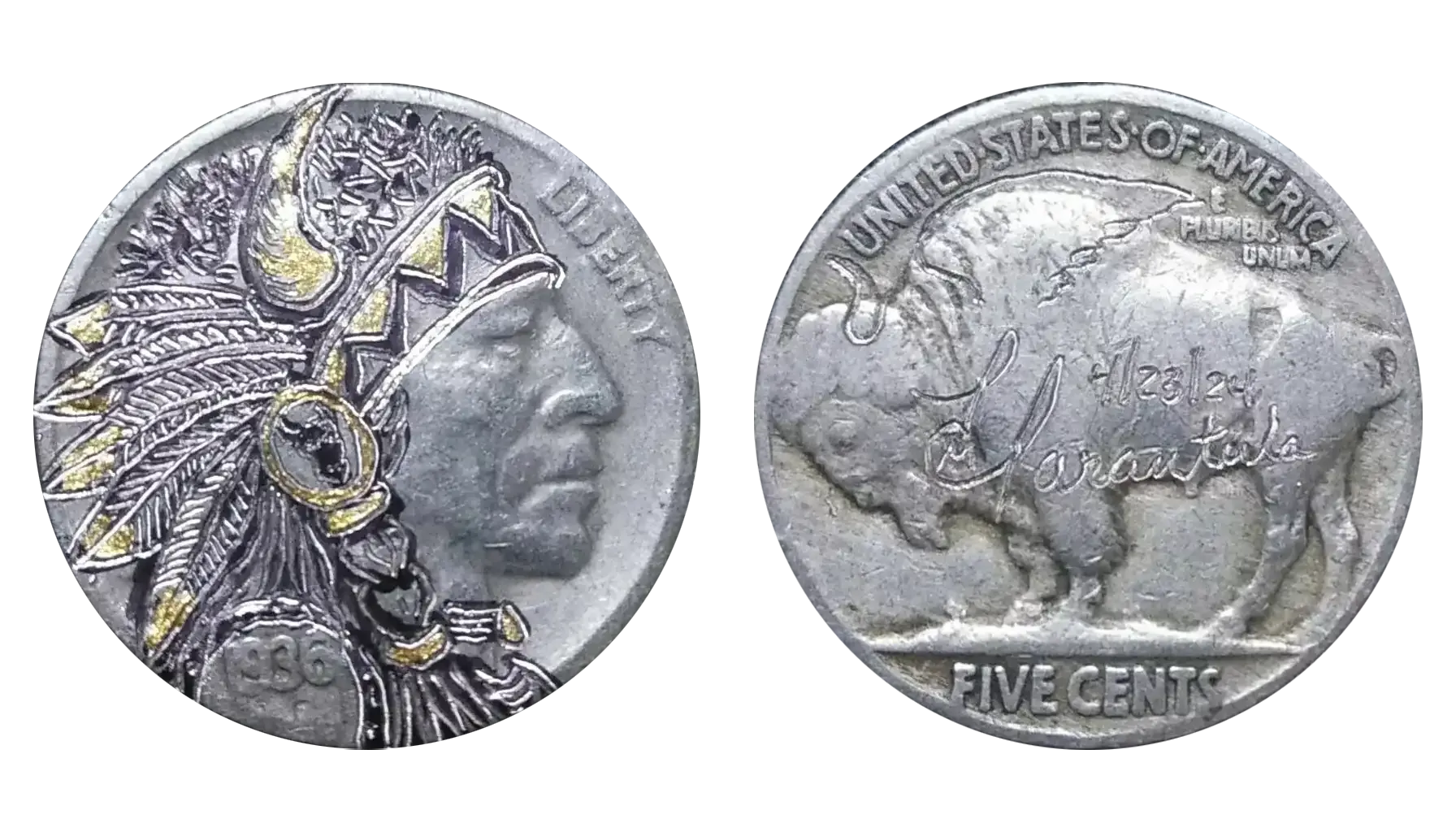
Conclusion
Owning a vintage Hobo Nickel is owning a tangible piece of American history. A simple, anonymous carving might be worth $50, while a documented masterpiece by a famous carver can exceed $10,000. If you manage to have one, pay closer attention to the way of storage to save the quality of the token.
It is a fascinating market where artistic quality, historical rarity, and the story behind the coin all come together to determine the final price. The enduring appeal lies in their transformation from common currency into personal treasures.

